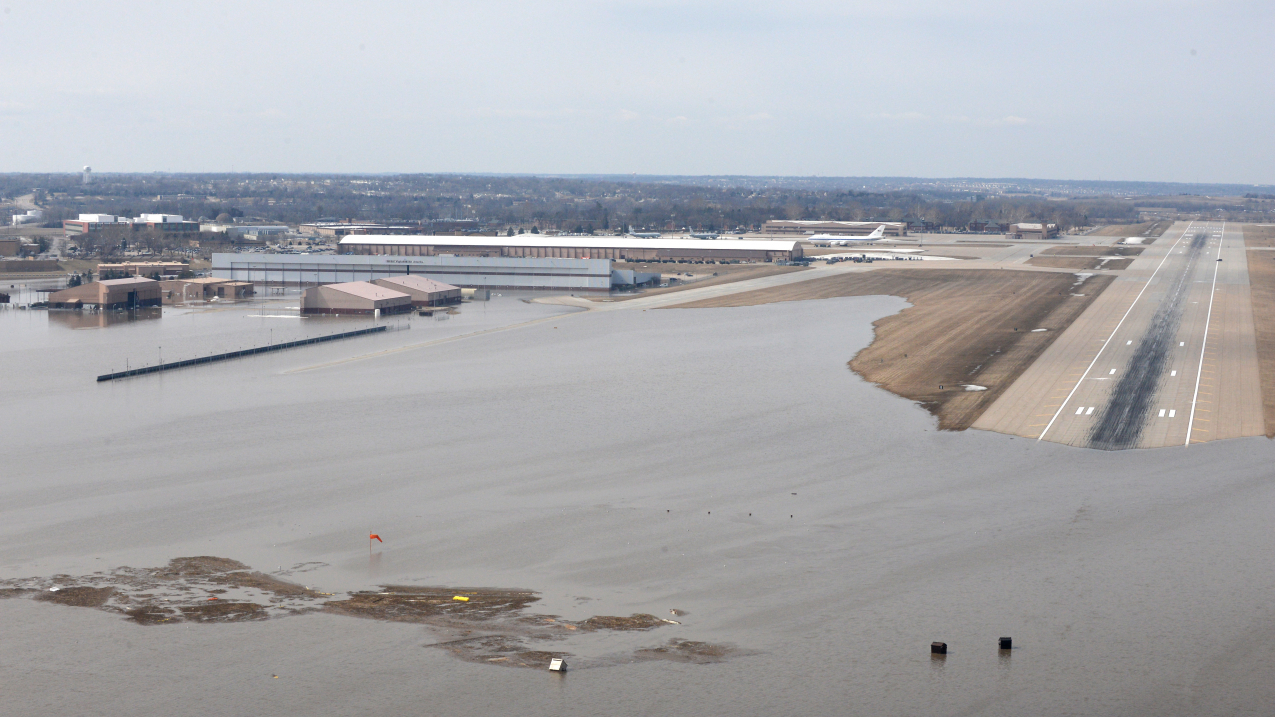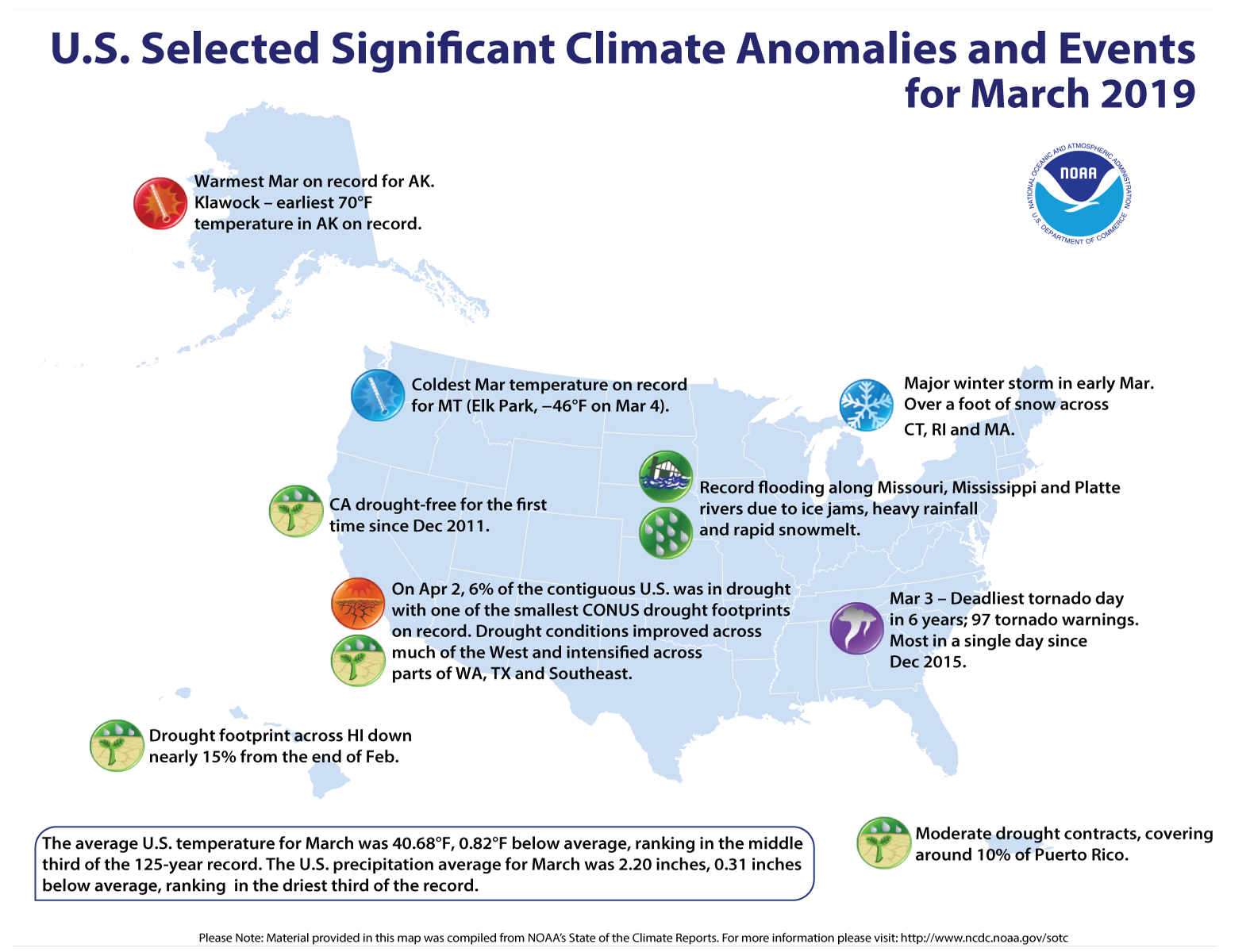Nation has its coldest first quarter in 5 years

An aerial view of Offutt Air Force Base and the surrounding areas affected by flood waters March 17, 2019. An increase in water levels of surrounding rivers and waterways caused by record-setting snowfall over the winter in addition to a large drop in air pressure caused widespread flooding across the state of Nebraska. See more Air Force photos at https://www.afspc.af.mil. (Image credit: Tech. Sgt. Rachelle Blake/U.S. Air Force)





